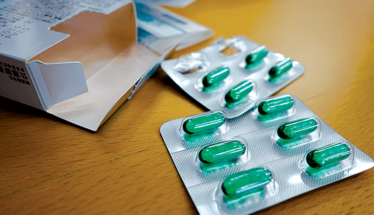Personalized Labels
Just how prevalent is pharmacogenomic information on European drug labels?
Advances in DNA sequencing, and a thirst for biostatistics and bioinformatics… the era of genetics is truly upon us – and increasingly found on our drug labels, with a growing number incorporating pharmacogenomic information (1). According to a group of regulatory experts who recently reviewed the labels of all 517 medicinally products centrally approved in the EU until August 2014, the next challenge is to assess how such information will be used to improve drug therapy and patient outcomes.

“Almost 15 percent of medicine labels examined contained pharmacogenomic information that directly impacts patient treatment. One of the aims of our study was to address how prevalent pharmacogenomics labeling is in Europe at the moment,” says Falk Ehmann, lead author of the study and scientific secretariat of the European Medicines Agency’s (EMA) Pharmacogenomics Working Party.
Fifteen percent may not sound like a lot, but between 1998 and 2010 there were never more than two new authorized medicines per year that included pharmacogenomic biomarkers. By 2013, there were 10 and the number is growing. But pharmacogenomics brings challenges for all stakeholders, such as translating data from pharmacogenomics studies into clinically relevant and meaningful product information.
“Regulators have the scientific evidence and check that the necessary information is included on a drug label, but this information also has to be used in the right way by healthcare professionals. And that, of course, is another story,” adds Ehmann.
Ehmann and his co-authors also looked at where exactly the pharmacogenomics information appears on the drug label, as this clearly has implications for its impact and use. “I think physicians need to be more aware that drug labels may contain a high proportion of genomics in the label. The information needs to be clear and understandable, and we need to ensure that the information is acted upon in practice to really make sure that pharmacogenomics is translated into better patient care,” says Ehmann.
Diagnostics are needed to apply pharmacogenomics in the most beneficial way for patients, and as Ehmann points out, there are areas for improvement: “If we have a drug that should only be taken or dosed based on the outcome of a diagnostic test, then the infrastructure has to be there to ensure that you can test correctly. In the US, labels name specific tests that should be used, with consequences on liability. In the EU, centrally approved drug labels do not contain this information guaranteeing that the tests used in practice would have the same performance as those used during clinical trials. I think that a more harmonized approach could improve treatment outcome.” Notably, EU legislation on (in-vitro) diagnostic medical devices is currently under review.
In the study, Ehmann and his co-authors write, “Patients’ expectations to receive the best individualized or personalized medicine are likely to increase and prescribers need to be trained and reassured on the availability and utility of genomic testing. Payers need to be convinced about the positive cost–benefit ratio of pharmacogenomic-guided healthcare. Affordable companion diagnostics and timely molecular profiling technologies in suitably qualified infrastructures are prerequisites. Current initiatives by the European Commission towards a more harmonized and transparent approach to companion diagnostic regulation will facilitate this trend.”
Although challenges lie ahead in the area of pharmacogenomics, Ehmann says there are positive developments in the pipeline, including at the EMA. Two guidelines on pharmacogenomics during the drug development and the post-authorization phase have recently been drafted, both of which aim to facilitate the integration of pharmacogenomics into drug development and usage for the benefit of patients (2,3).
- F. Ehmann et al., “Pharmacogenomic Information In Drug Labels: European Medicines Agency Perspective”, The Pharmacogenomics Journal, doi:10.1038/tpj.2014.86 (2015).
- EMA, “Use of Pharmacogenetic Methodologies in the Pharmacokinetic Evaluation of Medicinal Products” (2012), www.ema.com
- EMA, “Key Aspects for the Use of Pharmacogenomics Methodologies in the Pharmacovigilance Evaluation of Medicinal Products” (2014), www.ema.com

Making great scientific magazines isn’t just about delivering knowledge and high quality content; it’s also about packaging these in the right words to ensure that someone is truly inspired by a topic. My passion is ensuring that our authors’ expertise is presented as a seamless and enjoyable reading experience, whether in print, in digital or on social media. I’ve spent fourteen years writing and editing features for scientific and manufacturing publications, and in making this content engaging and accessible without sacrificing its scientific integrity. There is nothing better than a magazine with great content that feels great to read.



















